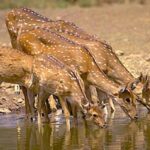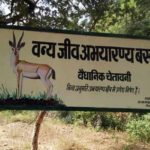Dhawa Doli Wildlife Sanctuary, located near Jodhpur in the Indian state of Rajasthan, is a haven for nature lovers and wildlife enthusiasts alike. Spanning over an area of approximately 110 square kilometers, this sanctuary is celebrated for its diverse flora and fauna.
The sanctuary is characterized by its semi-arid landscape, comprising dry deciduous forests, thorn scrub, and rocky terrain. It provides a habitat for various species of wildlife, including chinkara, Indian hare, desert fox, desert cat, and a plethora of bird species such as the Indian roller, spotted owlet, and the critically endangered great Indian bustard.
Visitors to Dhawa Doli Wildlife Sanctuary can indulge in activities like birdwatching, nature walks, and wildlife photography. The serene ambiance and untouched natural beauty make it an ideal destination for those seeking solace amidst nature.
Preservation efforts and ecotourism initiatives aim to conserve the rich biodiversity of this sanctuary, ensuring its continued significance as a wildlife habitat and a recreational retreat for generations to come.
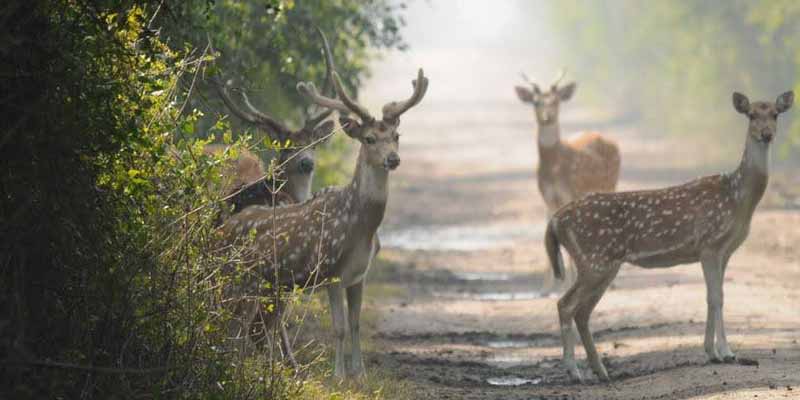
History of Dhawa Doli Wildlife Sanctuary
Dhawa Doli Wildlife Sanctuary, located near Jodhpur in the Indian state of Rajasthan, is a relatively small but significant protected area in the region. While I can provide information on wildlife sanctuaries and conservation efforts up to my last update in January 2022, I don’t have specific historical details about Dhawa Doli Wildlife Sanctuary. However, I can offer general information about wildlife sanctuaries in India and the significance of such reserves.
Wildlife sanctuaries are established primarily to conserve and protect wildlife, flora, and fauna in their natural habitats. They often serve as vital corridors for wildlife migration, breeding grounds, and habitats for endangered species. These areas are typically protected under law to prevent habitat destruction, poaching, and other human activities that may harm the ecosystem.
In the case of Dhawa Doli Wildlife Sanctuary, it likely serves a similar purpose, providing a protected environment for the diverse flora and fauna found in the region. This sanctuary may have been established to protect specific species or habitats unique to the area.
The history of wildlife sanctuaries in India dates back to the early 20th century with the establishment of places like the Corbett National Park (1936), one of the oldest national parks in India. Over the years, India has developed an extensive network of protected areas, including national parks, wildlife sanctuaries, and conservation reserves, to safeguard its rich biodiversity.
These protected areas play a crucial role in wildlife conservation efforts, providing a safe haven for various species amid increasing human encroachment and habitat destruction. They also contribute to ecological balance, biodiversity conservation, scientific research, and eco-tourism.
Visitors to Dhawa Doli Wildlife Sanctuary, like those to other sanctuaries across India, may have the opportunity to observe and appreciate the region’s wildlife, including species of birds, mammals, reptiles, and plant life in their natural habitats.
For specific historical details about Dhawa Doli Wildlife Sanctuary, including its establishment, significant events, and conservation efforts, further research into local government records, conservation literature, or contacting relevant authorities in Rajasthan may be necessary.
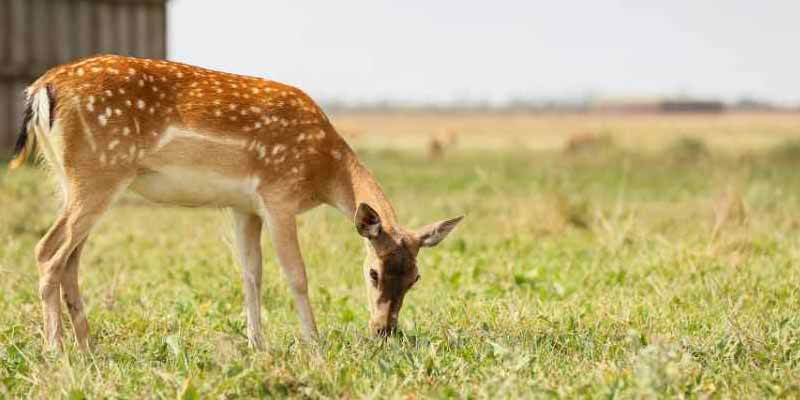
Places To Visit Near Dhawa Doli Wildlife Sanctuary
Near Dhawa Doli Wildlife Sanctuary in Jodhpur, there are several places of interest that visitors may enjoy exploring. Here are some options:
Jodhpur City: As Dhawa Doli Wildlife Sanctuary is near Jodhpur, visitors can explore the city known as the “Blue City” due to the blue-painted houses around the Mehrangarh Fort. Jodhpur offers a rich cultural experience with its historic forts, palaces, temples, and bustling markets.
Mehrangarh Fort: One of the largest forts in India, Mehrangarh Fort is a magnificent historical site located in Jodhpur. It offers stunning views of the city and houses a museum showcasing artifacts, weapons, paintings, and costumes from the region’s royal heritage.
Umaid Bhawan Palace: This grand palace in Jodhpur is one of the world’s largest private residences. A part of the palace is still the residence of the royal family of Jodhpur, while another section is converted into a museum showcasing artifacts, vintage cars, and the history of the royal family.
Jaswant Thada: A beautiful marble memorial located near Mehrangarh Fort, Jaswant Thada is dedicated to Maharaja Jaswant Singh II. It features intricate marble carvings, gardens, and offers serene views of the surrounding landscape.
Mandore Gardens: Located around 9 kilometers from Jodhpur, Mandore Gardens is an ancient heritage site known for its historic cenotaphs, temples, and lush greenery. It’s a peaceful place for a leisurely stroll and picnic.
Kaylana Lake: Situated around 8 kilometers from Jodhpur, Kaylana Lake is a scenic spot ideal for boating, picnics, and birdwatching. It offers picturesque views of the sunset against the backdrop of the Aravalli hills.
Rao Jodha Desert Rock Park: This ecological park near Mehrangarh Fort is a conservation area showcasing the natural flora and fauna of the Thar Desert. Visitors can enjoy walking trails amidst rocky terrain and desert vegetation.
Bishnoi Village: Experience rural life and traditions by visiting a Bishnoi village near Jodhpur. The Bishnoi community is known for their conservation efforts and harmonious coexistence with nature. Visitors can learn about their culture, lifestyle, and environmental conservation practices.
These are just a few options for places to visit near Dhawa Doli Wildlife Sanctuary in Jodhpur. Each offers its own unique attractions, whether historical, cultural, or natural, contributing to a memorable travel experience in the region.
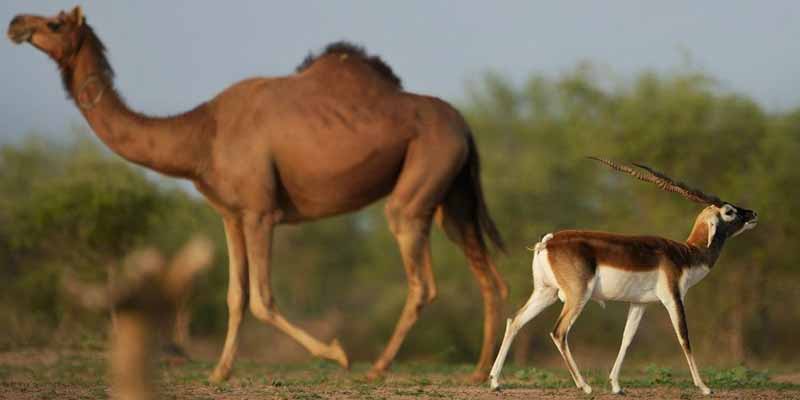
Best Time to Visit Dhawa Doli Wildlife Sanctuary
The best time to visit Dhawa Doli Wildlife Sanctuary near Jodhpur, Rajasthan, largely depends on weather conditions and wildlife sightings. Like many wildlife sanctuaries in India, Dhawa Doli experiences distinct seasons that can influence the visitor experience. Here are some considerations for planning your visit:
Winter (October to February): This is generally considered the best time to visit Dhawa Doli Wildlife Sanctuary. The weather during these months is pleasant, with cooler temperatures compared to the scorching heat of summer. Wildlife sightings are also more common during this period as animals are active and easier to spot, particularly in the mornings and evenings.
Spring (March to April): Spring is another good time to visit, especially in March when the weather starts to warm up but is still relatively mild. This period may offer good opportunities for birdwatching as many migratory bird species can be spotted in the sanctuary.
Summer (May to June): Summers in Rajasthan can be extremely hot, with temperatures soaring well above 40°C (104°F) in many places. Visiting during this time is not recommended due to the intense heat, which can make outdoor activities uncomfortable and wildlife sightings less frequent.
Monsoon (July to September): The monsoon season brings heavy rainfall to the region, transforming the landscape and providing relief from the summer heat. However, visiting Dhawa Doli Wildlife Sanctuary during this time can be challenging due to muddy roads, potential flooding, and limited accessibility to certain areas of the sanctuary. Wildlife sightings may also be less common during the rainy season.
Ultimately, the best time to visit Dhawa Doli Wildlife Sanctuary is during the winter months (October to February) when the weather is pleasant, and wildlife sightings are more likely. It’s also essential to check the weather forecast and road conditions before planning your visit, especially during the monsoon season, to ensure a safe and enjoyable experience.
How to Reach Dhawa Doli Wildlife Sanctuary
Dhawa Doli Wildlife Sanctuary is located near Jodhpur in the Indian state of Rajasthan. Here are some common transportation options to reach the sanctuary:
By Air: The nearest airport to Dhawa Doli Wildlife Sanctuary is Jodhpur Airport (also known as Maharana Pratap Airport). The airport is well-connected to major cities in India such as Delhi, Mumbai, Jaipur, and Udaipur. From the airport, you can hire a taxi or arrange for a private vehicle to reach the sanctuary, which is approximately 70-80 kilometers away.
By Train: Jodhpur Junction is the nearest major railway station, and it is well-connected to various cities across India. From Jodhpur Junction, you can hire a taxi or take a local bus to reach Dhawa Doli Wildlife Sanctuary. The sanctuary is located approximately 70-80 kilometers away from Jodhpur Junction.
By Road: Dhawa Doli Wildlife Sanctuary is accessible by road from Jodhpur and other nearby towns and cities. The sanctuary is located off the Jodhpur-Barmer Highway, and the nearest town is Balotra. You can drive to the sanctuary or hire a taxi from Jodhpur or Balotra. The road conditions are generally good, but it’s advisable to check the current road conditions before traveling, especially during the monsoon season.
Local Transport: Once you reach the vicinity of Dhawa Doli Wildlife Sanctuary, you may need to arrange for local transportation such as taxis or jeeps to reach the entrance of the sanctuary and explore its interior. Some tour operators may also offer guided tours or safari drives within the sanctuary.
It’s recommended to plan your transportation in advance and consider factors such as distance, travel time, and convenience when choosing the mode of transportation to reach Dhawa Doli Wildlife Sanctuary. Additionally, it’s advisable to check with local authorities or tour operators for the latest information on routes and transportation options.

